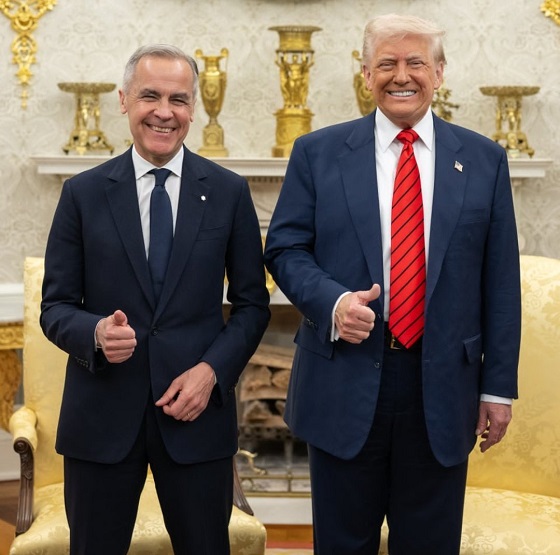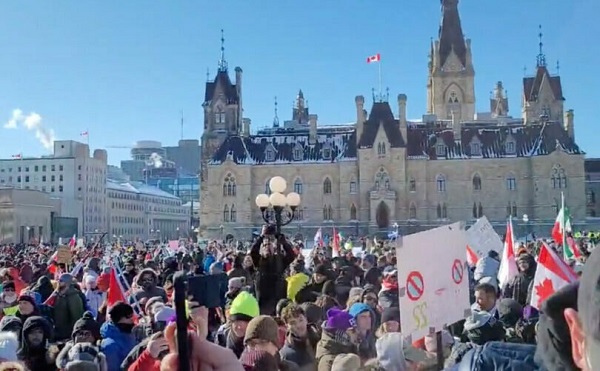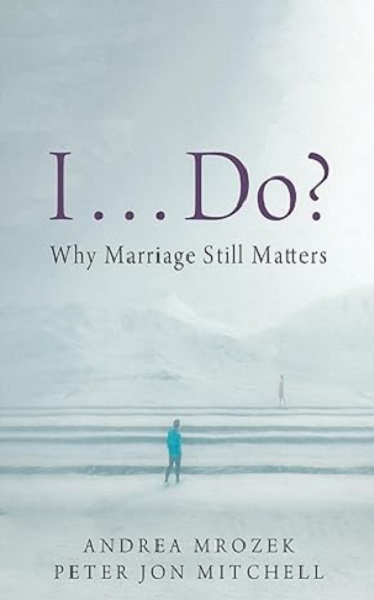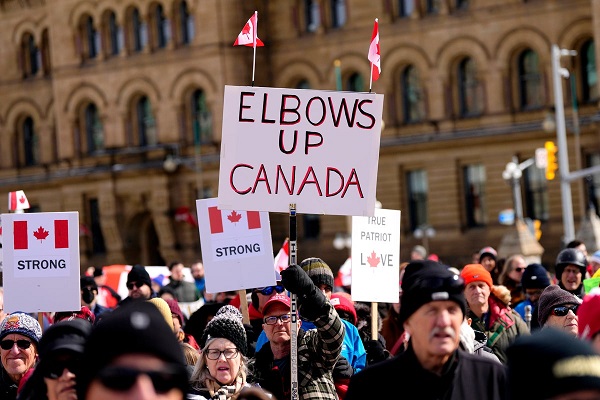National
Fleecing the Electorate: Timeline of a Campaign Built on Fear

A crisis too perfect to be true was amplified with Trudeau’s hot mic and Bob Rae’s Arctic map, planting the seeds of fear at just the right time.
The evidence is now clear. In the 2025 Canadian federal election, the Trudeau Liberals—under new leader Mark Carney—knowingly amplified a far-fetched threat of American annexation to frame the race as a battle for national survival. Voters were told that Donald Trump wanted to “break and own” Canada. What they weren’t told was that Carney had privately reassured Trump that his heated stump speech rhetoric was just for show.
If it weren’t so chilling, it might read as farce—poorly acted political theatre at the highest level.
A few events, in retrospect, appear as the keystones of what may have been a coordinated, disinformation-driven campaign. A campaign, with the benefit of hindsight, that dovetailed precisely with Chinese intelligence narratives.
Prime Minister Justin Trudeau, days before stepping down and apparently ‘feathering a pass’ to Mark Carney—a hockey metaphor that never surfaced in the subsequent ‘elbows up’ campaign—appeared at a Toronto business summit and, conveniently, was caught on a “hot mic.” He warned, in casual tones, that Donald Trump “very much” wanted Canada’s resources, and that “absorbing our country” was “a real thing.” The timing was surgical.
Equally suspicious was Canada’s UN Ambassador and long-time Liberal heavyweight Bob Rae posting a distorted Arctic map on X, showing Canada and Greenland fully swallowed by a U.S. flag. His caption: “Theft by force.”
The narrative had been cast: the United States was preparing to take Canada. The Liberals would defend the nation. And anyone who doubted that premise was complicit in national surrender.
It began with an offhand comment at Mar-a-Lago in late 2024—Trump joking that if Canada couldn’t meet its defense commitments, perhaps it should become the 51st state. By January, the joke had mutated into a real threat: Trump threatened 25% tariffs on Canadian goods and linked them to Canada’s failure to secure its borders. The Liberals seized on the moment.
Then came the hot mic leak.
In February, Prime Minister Trudeau, in a supposedly closed-door session, was caught warning that Trump’s “annexation” ambitions were “a real thing.” The remark was conveniently on-message, almost too perfectly timed as Carney prepared to take the reins. By March, with Trump’s tariffs in force and sovereignty rhetoric rising, B.C. Premier David Eby declared Trump was “campaigning against Canada’s independence.”
On March 15, Bob Rae posted his now-infamous map depicting Canada fully absorbed into the U.S. It wasn’t just visual. His accompanying tweet read:
“To emphasize, this is not about borders, or fentanyl. This is about a colossal land, water and resource grab. The tariffs are intended to weaken so this theft can take place. We’re not talking ‘purchase’ or ‘buying’. We’re talking theft by force. Fighting back will be hard, but it is the fight of our lives.”

Rae, a senior diplomat, had crossed the line into domestic campaign messaging. And it aligned perfectly with the pitch Carney was about to make.
Carney, newly installed as prime minister, wasted no time launching the “Elbows Up” campaign—framing the Liberals as the last line of defense against American imperialism. At every rally, Trump was the villain. Carney told Canadians, “We are in a fight for our country.”
Apparently, Beijing was too.
On April 7, 2025, the Security and Intelligence Threats to Elections (SITE) Task Force reported that Chinese state-affiliated accounts on WeChat had launched a coordinated “information operation” targeting the Canadian election. These accounts consistently amplified narratives portraying Carney as a principled defender of Canadian sovereignty against Trump’s alleged annexation ambitions. The operation, linked to the Chinese Communist Party’s Central Political and Legal Affairs Commission, was assessed to have likely influenced Chinese-Canadian communities in key ridings—potentially swaying votes.
Meanwhile, just days after Carney’s incendiary rhetoric began, he engaged in a private call with President Trump. According to CBC reporting, Trump once again raised the 51st-state concept. Carney made no mention of it in the official government readout. Only after CBC brought the issue to light did he publicly acknowledge that the annexation idea had, in fact, been raised.
Notably, this disclosure appeared to give new momentum to the Liberal campaign’s annexation narrative—despite indications that Trump had begun moderating his tone. What CBC’s report did not include, however—if one accepts as credible a subsequent account from National Post columnist John Ivison—was arguably more consequential. Ivison reported that during the same call, Carney assured Trump that the anti-Trump messaging was a strategic necessity, not a personal indictment, and further characterized Trump as a “transformational” leader. In public, Carney framed Trump as a direct threat to Canadian sovereignty. In private, according to this reporting, he extended praise.
The contrast was cemented after the vote.
On April 28, the Liberals secured a strong minority government. Carney celebrated by declaring, “Donald Trump wants to break us, so that America can own us.” But less than a week later, standing beside Trump in the Oval Office, Carney dropped the defiance. He called Trump “transformational,” credited him for tackling fentanyl, and pledged Canada would be a good partner. By mid-May, he confirmed Canada was in talks to join Trump’s “Golden Dome” missile shield.
Notably, the region invoked by Bob Rae’s tweet—the Arctic and Canadian North—sits squarely within the strategic focus of that same U.S. missile defense system. On May 21, China’s foreign ministry lashed out at the Golden Dome project, calling it a threat and urging Washington to abandon it. The Liberal campaign had warned Canadians of U.S. ambitions to seize Canadian land and militarize the Arctic—yet Carney now aligns with the very policy China condemns most. The contradiction is stark, and telling.
The question isn’t whether Trump’s actions posed a real challenge to Canada. His tariffs and rhetoric were aggressive and unprecedented. The question is whether the Carney Liberals exaggerated that threat, weaponized fear, and manipulated public sentiment to win an election—only to reverse course immediately after.
If that’s the case, then a more unsettling question follows: can Mark Carney’s pledges—either to Donald Trump or to the Canadian people—be trusted going forward?
The Canadian people were told they were voting to protect sovereignty. In reality, they voted for a narrative. The real strategy—only visible now—was to create a crisis, stoke national anxiety, and cast Carney as a saviour.
Canada faces real threats: hostile state networks, aggressive election interference from Beijing, economic sabotage, and intellectual property theft. The take-down of Nortel by Huawei still resonates globally as a cautionary tale. Fentanyl trafficking from Canadian soil is rising. At the same time, there is growing consensus that Canada must finally unleash its vast natural resources to strengthen its geopolitical position. What matters now is not whether Mark Carney can win votes—but whether he can govern.
He campaigned on the word build. But we can’t become a superpower on a foundation of disillusionment and trickery.
A cohesive, powerful, unified Canada must be built on clarity. Only fools build on foundations of shifting sand.
The Bureau is a reader-supported publication.
To receive new posts and support my work, consider becoming a free or paid subscriber.
Invite your friends and earn rewards
Freedom Convoy
Court Orders Bank Freezing Records in Freedom Convoy Case

|
A Canadian court has ordered the release of documents that could shed light on how federal authorities and law enforcement worked together to freeze the bank accounts of a protester involved in the Freedom Convoy.
Both the RCMP and TD Bank are now required to provide records related to Evan Blackman, who took part in the 2022 demonstrations and had his accounts frozen despite not being convicted of any crime at the time.
The Justice Centre for Constitutional Freedoms (JCCF) announced the Ontario Court of Justice ruling. The organization is representing Blackman, whose legal team argues that the actions taken against him amounted to a serious abuse of power.
“The freezing of Mr. Blackman’s bank accounts was an extreme overreach on the part of the police and the federal government,” said his lawyer, Chris Fleury. “These records will hopefully reveal exactly how and why Mr. Blackman’s accounts [were] frozen.”
Blackman was arrested during the mass protests in Ottawa, which drew thousands of Canadians opposed to vaccine mandates and other pandemic-era restrictions.
Although he faced charges of mischief and obstructing police, those charges were dismissed in October due to a lack of evidence. Despite this, prosecutors have appealed, and a trial is set to begin on August 14.
At the height of the protests, TD Bank froze three of Blackman’s accounts following government orders issued under the Emergencies Act. Then-Prime Minister Justin Trudeau had invoked the act to grant his government broad powers to disrupt the protest movement, including the unprecedented use of financial institutions to penalize individuals for their support or participation.
In 2024, a Federal Court Justice ruled that Trudeau’s decision to invoke the act had not been justified.
Blackman’s legal team plans to use the newly released records to demonstrate the extent of government intrusion into personal freedoms.
According to the JCCF, this case may be the first in Canada where a criminal trial includes a Charter challenge over the freezing of personal bank accounts under emergency legislation.
|
Alberta
‘Far too serious for such uninformed, careless journalism’: Complaint filed against Globe and Mail article challenging Alberta’s gender surgery law

Macdonald Laurier Institute challenges Globe article on gender medicine
The complaint, now endorsed by 41 physicians, was filed in response to an article about Alberta’s law restricting gender surgery and hormones for minors.
On June 9, the Macdonald-Laurier Institute submitted a formal complaint to The Globe and Mail regarding its May 29 Morning Update by Danielle Groen, which reported on the Canadian Medical Association’s legal challenge to Alberta’s Bill 26.
Written by MLI Senior Fellow Mia Hughes and signed by 34 Canadian medical professionals at the time of submission to the Globe, the complaint stated that the Morning Update was misleading, ideologically slanted, and in violation the Globe’s own editorial standards of accuracy, fairness, and balance. It objected to the article’s repetition of discredited claims—that puberty blockers are reversible, that they “buy time to think,” and that denying access could lead to suicide—all assertions that have been thoroughly debunked in recent years.
Given the article’s reliance on the World Professional Association for Transgender Health (WPATH), the complaint detailed the collapse of WPATH’s credibility, citing unsealed discovery documents from an Alabama court case and the Cass Review’s conclusion that WPATH’s guidelines—and those based on them—lack developmental rigour. It also noted the newsletter’s failure to mention the growing international shift away from paediatric medical transition in countries such as the UK, Sweden, and Finland. MLI called for the article to be corrected and urged the Globe to uphold its commitment to balanced, evidence-based journalism on this critical issue.
On June 18, Globe and Mail Standards Editor Sandra Martin responded, defending the article as a brief summary that provided a variety of links to offer further context. However, the three Globe and Mail news stories linked to in the article likewise lacked the necessary balance and context. Martin also pointed to a Canadian Paediatric Society (CPS) statement linked to in the newsletter. She argued it provided “sufficient context and qualification”—despite the fact that the CPS itself relies on WPATH’s discredited guidelines. Notwithstanding, Martin claimed the article met editorial standards and that brevity justified the lack of balance.
MLI responded that brevity does not excuse misinformation, particularly on a matter as serious as paediatric medical care, and reiterated the need for the Globe to address the scientific inaccuracies directly. MLI again called for the article to be corrected and for the unsupported suicide claim to be removed. As of this writing, the Globe has not responded.
Letter of complaint
June 9, 2025
To: The Globe and Mail
Attn: Sandra Martin, standards editor
CC: Caroline Alphonso, health editor; Mark Iype, deputy national editor and Alberta bureau chief
To the editors;
Your May 29 Morning Update: The Politics of Care by Danielle Groen, covering the Canadian Medical Association’s legal challenge to Alberta’s Bill 26, was misleading and ideologically slanted. It is journalistically irresponsible to report on contested medical claims as undisputed fact.
This issue is far too serious for such uninformed, careless journalism lacking vital perspectives and scientific context. At stake is the health and future of vulnerable children, and your reporting risks misleading parents into consenting to irreversible interventions based on misinformation.
According to The Globe and Mail’s own Journalistic Principles outlined in its Editorial Code of Conduct, the credibility of your reporting rests on “solid research, clear, intelligent writing, and maintaining a reputation for honesty, accuracy, fairness, balance and transparency.” Moreover, your principles go on to state that The Globe will “seek to provide reasonable accounts of competing views in any controversy.” The May 29 update violated these principles. There is, as I will show, a widely available body of scientific information that directly contests the claims and perspectives presented in your article. Yet this information is completely absent from your reporting.
The collapse of WPATH’s credibility
The article’s claim that Alberta’s law “falls well outside established medical practice” and could pose the “greatest threat” to transgender youth is both false and inflammatory. There is no global medical consensus on how to treat gender-distressed young people. In fact, in North America, guidelines are based on the Standards of Care developed by the World Professional Association for Transgender Health (WPATH)—an organization now indisputably shown to place ideology above evidence.
For example, in a U.S. legal case over Alabama’s youth transition ban, WPATH was forced to disclose over two million internal emails. These revealed the organization commissioned independent evidence reviews for its latest Standards of Care (SOC8)—then suppressed those reviews when they found overwhelmingly low-quality evidence. Yet WPATH proceeded to publish the SOC8 as if it were evidence-based. This is not science. It is fraudulent and unethical conduct.
These emails also showed Admiral Rachel Levine—then-assistant secretary for Health in the Biden administration—pressured WPATH to remove all lower age recommendations from the guidelines—not on scientific grounds, but to avoid undermining ongoing legal cases at the state level. This is politics, not sound medical practice.
The U.K.’s Cass Review, a major multi-year investigation, included a systematic review of the guidelines in gender medicine. A systematic review is considered the gold standard because it assesses and synthesizes all the available research in a field, thereby reducing bias and providing a large comprehensive set of data upon which to reach findings. The systematic review of gender medicine guidelines concluded that WPATH’s standards of care “lack developmental rigour” and should not be used as a basis for clinical practice. The Cass Review also exposed citation laundering where medical associations endlessly recycled weak evidence across interlocking guidelines to fabricate a false consensus. This led Cass to suggest that “the circularity of this approach may explain why there has been an apparent consensus on key areas of practice despite the evidence being poor.”
Countries like Sweden, Finland, and the U.K. have now abandoned WPATH and limited or halted medicalized youth transitions in favour of a therapy-first approach. In Norway, UKOM, an independent government health agency, has made similar recommendations. This shows the direction of global practice is moving away from WPATH’s medicalized approach—not toward it. As part of any serious effort to “provide reasonable accounts of competing views,” your reporting should acknowledge these developments.
Any journalist who cites WPATH as a credible authority on paediatric gender medicine—especially in the absence of contextualizing or competing views—signals a lack of due diligence and a fundamental misunderstanding of the field. It demonstrates that either no independent research was undertaken, or it was ignored despite your editorial standards.
Puberty blockers don’t ‘buy time’ and are not reversible
Your article repeats a widely debunked claim: that puberty blockers are a harmless pause to allow young people time to explore their identity. In fact, studies have consistently shown that between 98 per cent and 100 per cent of children placed on puberty blockers go on to take cross-sex hormones. Before puberty blockers, most children desisted and reconciled with their birth sex during or after puberty. Now, virtually none do.
This strongly suggests that blocking puberty in fact prevents the natural resolution of gender distress. Therefore, the most accurate and up-to-date understanding is that puberty blockers function not as a pause, but as the first step in a treatment continuum involving irreversible cross-sex hormones. Indeed, a 2022 paper found that while puberty suppression had been “justified by claims that it was reversible … these claims are increasingly implausible.” Again, adherence to the Globe’s own editorial guidelines would require, at minimum, the acknowledgement of the above findings alongside the claims your May 29 article makes.
Moreover, it is categorically false to describe puberty blockers as “completely reversible.” Besides locking youth into a pathway of further medicalization, puberty blockers pose serious physical risks: loss of bone density, impaired sexual development, stunted fertility, and psychosocial harm from being developmentally out of sync with peers. There are no long-term safety studies. These drugs are being prescribed to children despite glaring gaps in our understanding of their long-term effects.
Given the Globe’s stated editorial commitment to principles such as “accuracy,” the crucial information from the studies linked above should be provided in any article discussing puberty blockers. At a bare minimum, in adherence to the Globe’s commitment to “balance,” this information should be included alongside the contentious and disputed claims the article makes that these treatments are reversible.
No proof of suicide prevention
The most irresponsible and dangerous claim in your article is that denying access to puberty blockers could lead to “depression, self-harm and suicide.” There is no robust evidence supporting this transition-or-suicide narrative, and in fact, the findings of the highest-quality study conducted to date found no evidence that puberty suppression reduces suicide risk.
Suicide is complex and attributing it to a single cause is not only false—it violates all established suicide reporting guidelines. Sensationalized claims like this risk creating contagion effects and fuelling panic. In the public interest, reporting on the topic of suicide must be held to the most rigorous standards, and provide the most high-quality and accurate information.
Euphemism hides medical harm
Your use of euphemistic language obscures the extreme nature of the medical interventions being performed in gender clinics. Calling double mastectomies for teenage girls “paediatric breast surgeries for gender-affirming reasons” sanitizes the medically unnecessary removal of a child’s healthy organs. Referring to phalloplasty and vaginoplasty as “gender-affirming surgeries on lower body parts” conceals the fact that these are extreme operations involving permanent disfigurement, high complication rates, and often requiring multiple revisions.
Honest journalism should not hide these facts behind comforting language. Your reporting denies youth, their parents, and the general public the necessary information to understand the nature of these interventions. Members of the general public rely greatly on the news media to equip them with such information, and your own editorial standards claim you will fulfill this core responsibility.
Your responsibility to the public
As a flagship Canadian news outlet, your responsibility is not to amplify activist messaging, but to report the truth with integrity. On a subject as medically and ethically fraught as paediatric gender medicine, accuracy is not optional. The public depends on you to scrutinize claims, not echo ideology. Parents may make irreversible decisions on behalf of their children based on the narratives you promote. When reporting is false or ideologically distorted, the cost is measured in real-world harm to some of our society’s most vulnerable young people.
I encourage the Globe and Mail to publish an updated version on this article in order to correct the public record with the relevant information discussed above, and to modify your reporting practices on this matter going forward—by meeting your own journalistic standards—so that the public receives balanced, correct, and reliable information on this vital topic.
Trustworthy journalism is a cornerstone of public health—and on the issue of paediatric gender medicine, the stakes could not be higher.
Sincerely,
Mia Hughes
Senior Fellow, Macdonald-Laurier Institute
Author of The WPATH Files
The following 41 physicians have signed to endorse this letter:
Dr. Mike Ackermann, MD
Dr. Duncan Veasey, Psy MD
Dr. Rick Gibson, MD
Dr. Benjamin Turner, MD, FRCSC
Dr. J.N. Mahy, MD, FRCSC, FACS
Dr. Khai T. Phan, MD, CCFP
Dr. Martha Fulford, MD
Dr. J. Edward Les, MD, FRCPC
Dr. Darrell Palmer, MD, FRCPC
Dr. Jane Cassie, MD, FRCPC
Dr. David Lowen, MD, FCFP
Dr. Shawn Whatley, MD, FCFP (EM)
Dr. David Zitner, MD
Dr. Leonora Regenstreif, MD, CCFP(AM), FCFP
Dr. Gregory Chan, MD
Dr. Alanna Fitzpatrick, MD, FRCSC
Dr. Chris Millburn, MD, CCFP
Dr. Julie Curwin, MD, FRCPC
Dr. Roy Eappen, MD, MDCM, FRCP (c)
Dr. York N. Hsiang, MD, FRCSC
Dr. Dion Davidson, MD, FRCSC, FACS
Dr. Kevin Sclater, MD, CCFP (PC)
Dr. Theresa Szezepaniak, MB, ChB, DRCOG
Dr. Sofia Bayfield, MD, CCFP
Dr. Elizabeth Henry, MD, CCFP
Dr. Stephen Malthouse, MD
Dr. Darrell Hamm, MD, CCFP
Dr. Dale Classen, MD, FRCSC
Dr. Adam T. Gorner, MD, CCFP
Dr. Wesley B. Steed, MD
Dr. Timothy Ehmann, MD, FRCPC
Dr. Ryan Torrie, MD
Dr. Zachary Heinricks, MD, CCFP
Dr. Jessica Shintani, MD, CCFP
Dr. Mark D’Souza, MD, CCFP(EM), FCFP*
Dr. Joanne Sinai, MD, FRCPC*
Dr. Jane Batt, MD*
Dr. Brent McGrath, MD, FRCPC*
Dr. Leslie MacMillan MD FRCPC (emeritus)*
Dr. Ian Mitchell, MD, FRCPC*
Dr. John Cunnington, MD
*Indicates physician who signed following the letter’s June 9 submission to the Globe and Mail, but in advance of this letter being published on the MLI website.
-

 Fraser Institute2 days ago
Fraser Institute2 days agoBefore Trudeau average annual immigration was 617,800. Under Trudeau number skyrocketted to 1.4 million annually
-

 Crime2 days ago
Crime2 days ago“This is a total fucking disaster”
-

 MAiD2 days ago
MAiD2 days agoCanada’s euthanasia regime is already killing the disabled. It’s about to get worse
-

 Frontier Centre for Public Policy1 day ago
Frontier Centre for Public Policy1 day agoNew Book Warns The Decline In Marriage Comes At A High Cost
-

 Economy1 day ago
Economy1 day agoThe stars are aligning for a new pipeline to the West Coast
-

 Red Deer2 days ago
Red Deer2 days agoJoin SPARC in spreading kindness by July 14th
-

 Business2 days ago
Business2 days agoPrime minister can make good on campaign promise by reforming Canada Health Act
-

 National1 day ago
National1 day agoLiberal ‘Project Fear’ A Longer Con








